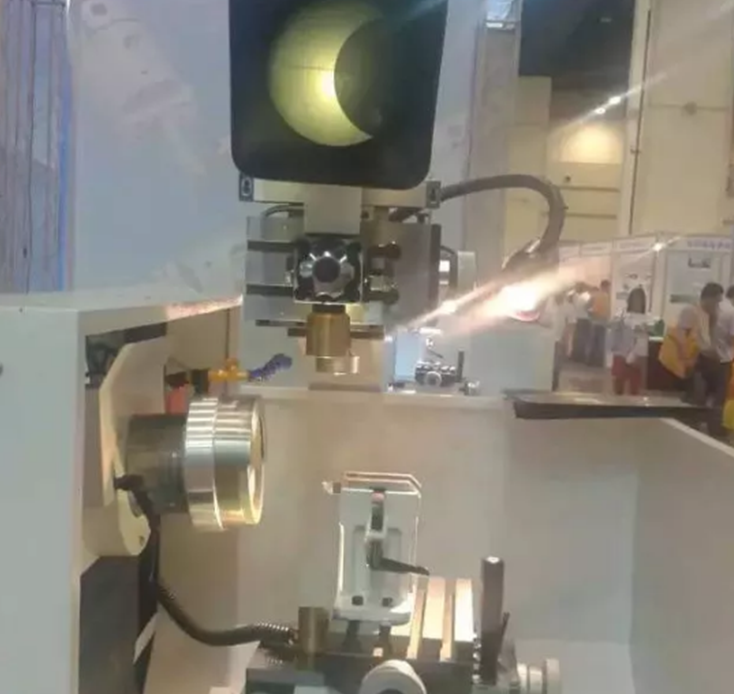1.Technological characteristics of diamond tool grinding
The grinding of diamond tools has its own technological characteristics. The prominent characteristics are that the material hardness is high, which leads to the excessive loss of the grinding wheel in the grinding process, and the size is unstable; Secondly, most diamond tools are turning tools or blades, and the position of their grinding position relative to the machine tool is uncertain (such as the change of blade thickness), resulting in the change of grinding points. Third, the grinding resistance is large, which makes the process system composed of grinding wheel, cutting tool, fixture and machine tool produce relatively large elastic deformation, resulting in relatively large “tool yield” phenomenon.
These three features are the three “roadblocks” to realize automatic grinding, which directly affect the dimensional accuracy of the tool after die cutting. If not properly solved, it will inevitably lead to poor consistency of grinding dimensional accuracy and roughness, low grinding efficiency, and not suitable for mass production. The application of sound control technology in diamond tool grinder can effectively solve these three problems.

2.Application of adaptive control technology in rough grinding
The main tasks of rough grinding diamond are: to improve grinding efficiency, that is, to set as few safe distances as possible and to reduce the time of “grinding” air; Remove the grinding allowance as soon as possible within the range that the rigidity of the machine tool can bear; Find out as early as possible that the grinding allowance has been removed (the sign is that the grinding resistance has been reduced to a small extent).
The intense sound wave generated by the friction between the grinding wheel and the diamond tool propagates on the process equipment. The monitoring of the sound wave can accurately reflect the grinding conditions, such as whether the tool is in contact with the grinding wheel, whether the pressure between the tool and the grinding wheel (i.e. grinding resistance) is eliminated, etc. If the control system can collect and analyze these information in real time to make the machine tool control system adapt to it, it is tantamount to installing a sensitive ear on the machine tool, making the machine tool controller a more intelligent adaptive system. In fact, the development of this system is also inspired by the sharpening of knives by on-site workers.
During normal grinding, there are two obvious characteristics of acoustic frequency: one is the moment when the tool contacts with the grinding wheel, and the other is when the grinding reaches a relatively final dimension (the grinding resistance decreases to a small degree), which is easy to understand. The former can be used as the dividing line between the end of rapid feed and the beginning of grinding feed; The latter can be used as a sign of the completion of grinding.
Even in the process of “close contact” between the tool and the grinding wheel, the change of acoustic frequency can also reflect the resistance between the tool and the grinding wheel. This “information” is fed back to the machine tool controller to adjust the servo feed speed so that the grinding can be completed under a relatively “constant” resistance, which is of great significance to improve the grinding efficiency and prolong the service life of the machine tool.
3.Application of “tool setting grinding method” in fine grinding
The main task of diamond fine grinding is to accurately and stably control the final dimension accuracy of grinding. The grinding wheel wear, the accurate positioning of the grinding point of the blade tip and the grinding resistance will all affect the machining accuracy. These factors have nothing to do with the kinematic accuracy of the machine tool, but are closely related to the monitoring of the grinding state, such as when to start grinding (i.e. tool setting point) and to what extent to finish grinding.
Although the wear of the grinding wheel is difficult to measure, and the blade height (which affects the position of the grinding point) is also difficult to measure within a certain range, the control system with a voice control device can always easily record the accurate position of the contact moment between the tool tip and the grinding wheel surface. Taking this as the starting point, the relative feeding can accurately control the dimensional accuracy, which is called “tool setting grinding method”. Of course, the precondition of “tool setting grinding method” is that the previous process has an accurate benchmark, or can accurately measure the size before grinding, which can be achieved by using the CCD system online measurement system. In the industry, manual machine tools are used to grind tools. The grinding process of * * back angle (i.e. polishing edge) of PCD tools is as follows: on the basis of rough grinding size, grind down 0.02~0.03mm to form a blade belt of 0.05~0.1mm. This also coincides with the “knife sharpening method”.
In the grinding process, the grinding wheel is constantly worn. The system can detect and compensate this wear in time, and compress the “grinding air” time to close to zero, greatly improving the grinding efficiency.
Sound control technology is widely used in the whole grinding industry because it can resolve the common contradictions in grinding. This contradiction is particularly prominent in diamond grinding.